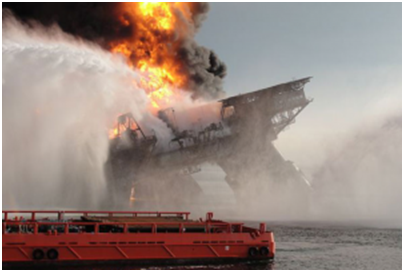Time to (Re) Consider Taking Some Risks?
Sometimes we're asked questions about emergency management or implementation of changes to procedures, and we give honest answers that the questioner or audience doesn't always like or agree with. The rebuttal from the person asking the question often sounds like, "Well, but what if my company/manager/colleagues/Wardens don't agree?" Or, "What if it doesn't work?"
Our response sometimes doesn't seem overly sympathetic, though we don't mean to be sarcastic when we reply, "We never said this was Risk Free Emergency Management, or Risk Aversion Emergency Management. Sometimes you have to do something different, and exchange some kind of risk you are already living with for a risk that's different, but perhaps better." For instance, there's a risk that your Wardens won't like the burden of regular communication or even a meeting in addition to their training, but we see that as a preferable risk than not having a relationship with your Wardens at all. Maybe giving negative feedback risks stinging your Wardens' feelings a bit...but it's better than the risk of them not changing their ineffective behaviors or learning from mistakes. (This is in part why status quo is always something to keep an eye on - you have to analyze what you're already doing too. All things corrode without a little maintenance; emergency procedures are no different)
Sometimes, you have to take risks. Sometimes risks are the right thing to do, despite your fear.
If you recall the Deepwater Horizon explosion in the Gulf of Mexico in April 2010, you may also recall the leadership and acceptance of risk that Today Makes Tomorrow (TMT) CEO was prepared to commit to in an effort to resolve a major emergency. (The following is an excerpt from the archives from the Wall Street Journal but you can still access the legacy article here)
“The day the Deepwater Horizon exploded, TMT CEO Nobu Su ordered the A Whale, a brand-new $160 million cargo hauler, to start sailing west from China, while he commissioned Hyundai engineers to devise a plan to convert it into a skimmer. The plans were worked out by the time the ship made it to a Portugal shipyard, where it was modified.
Maybe you're not a CEO, but trust us, this was a big risk. The CEO had gone to his board and sought approval for capital spending on a cargo ship, which he then built - and in one day, changed everything. But what's more, he didn't have a plan for the change - he just sent it west. Not knowing. Not sure.
Okay, so with the benefit of hindsight, the vessel ended up playing very little part in the US efforts to collect crude oil throughout the Gulf and that effort and all it’s politics are a story in itself. However, leadership, acceptance of risk and initiative is always welcome when faced with an emergency.
Next time you're not sure what to do, we're sure that there are options you considered but ruled out because of risk.
Reconsider them.

